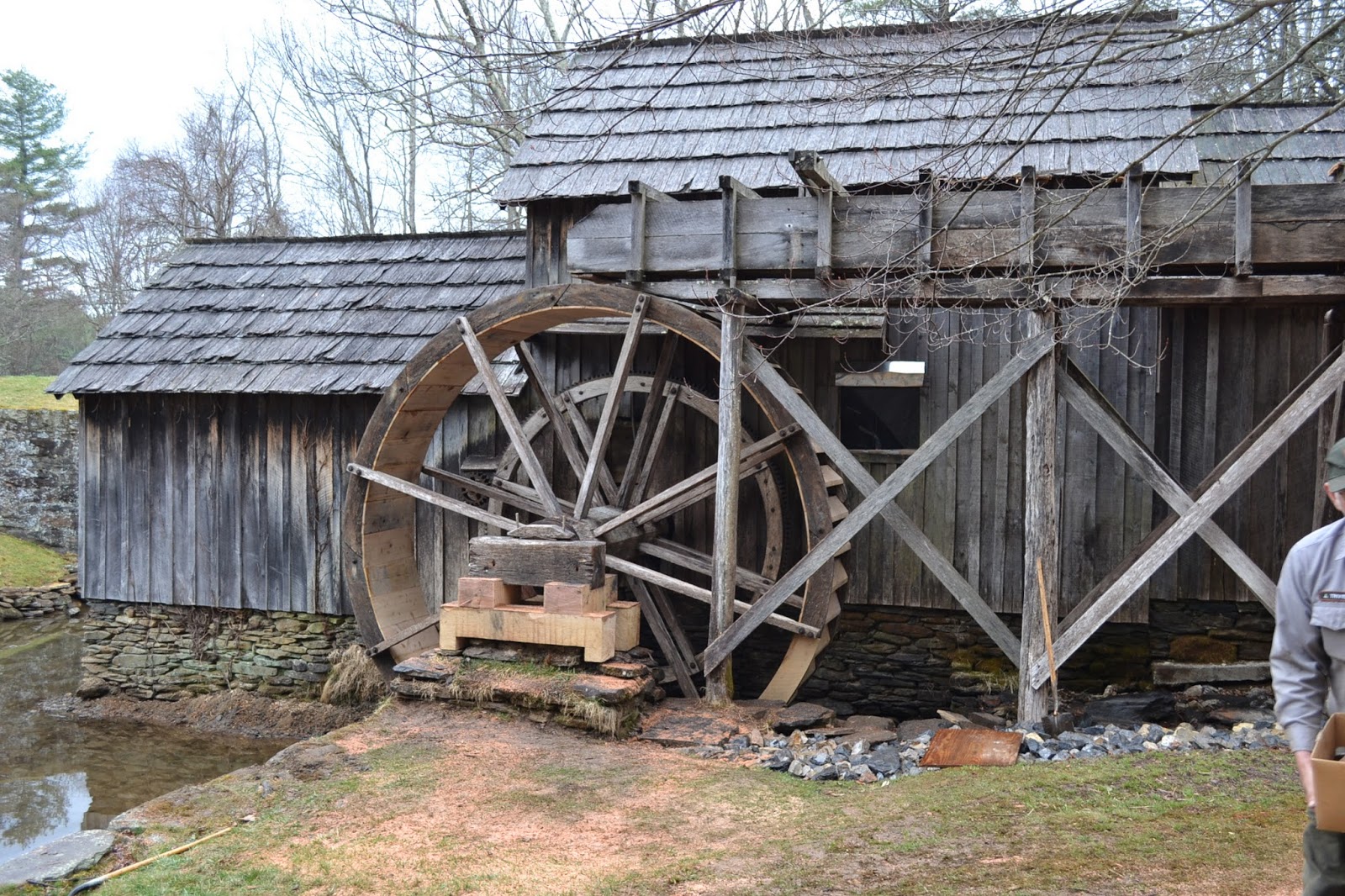But then you walked up closer to the mill, and you could see the deterioration -- the crumbling buckets around the wheel, the broken flume, the nonexistent backing board behind the buckets. All of them were fixed in the last few weeks of March and the first days of April, thanks to hard work, skill and plain old American ingenuity by Parkway workers, and financial help from the Blue Ridge Parkway Foundation. But what about those awful looking blocks holding up the outboard end of the heavy octagonal axle that carries the weight of the waterwheel? Some of those blocks were just eaten up with heavy weather and hard use. How would they be replaced if the waterwheel was to remain on its axle?
 |
| Photos by Jack Betts, Rocky Knob Writery LLC |
In Chapter 5 of this series you read about how many of the components of this project came from a 500-year-old white oak that had fallen several years ago in the E.B. Jeffress Park down the Parkway. That included the big 12-inch-square blocks that would replace the pillow blocks. These blocks sat on the hillside under a stack of bucket components for several weeks while the wheel itself was being rebuilt. There's still work to do on them, including tinkering with several leaky buckets, but new material would have to be cut. It was time start shaping these blocks to the peculiar dimensions and angles for the replacement blocks.
The lower blocks needed to fit over carefully laid stones that have been holding axle blocks -- similar to the pillow blocks that machinists use to hold bearings -- for a half century or more. That involved cutting out a good bit of wood and then smoothing off the surface.
 |
| David Weeks, left, and David Cannaday measure the big saw's depth for cutting out excess wood |
 |
| Jack Trivett uses a sharp axe to smooth the surface |
 |
| One of two finished blocks for the base |
Jack Trivett had used a pair of hydraulic jacks to gently raise the axle just enough to take pressure off the blocks and ease them out. There were still obstacles, including 1/2 inch rods that were driven into the wood to keep the blocks from shifting. The only way to get some of them out was to use a wedge and split away the middle layer of blocks.
 |
| David Cannaday nibbles away at a middle block |
 |
| Workers manhandle the rear lower block into place, gingerly avoiding upsetting the hydraulic jacks |
 |
| With the two lower blocks in place, workers bring in the new middle-level blocks |
The second middle block slid in with a bit of coaxing and gently the jacks were eased.
 |
| Jack Trivett removes the next to last jack as the whole rig settles into place |
And within just a few hours of starting this sometimes-nailbiting experience -- how often do you jack up a waterwheel and put your hands beneath thousands of pounds of heavy blocks to fix something? And how often do you want to? -- the new blocks were in, the axle sitting tight and level, the tolerances close enough to make everyone happy and the jury-rigged brakes on the waterwheel released. And it wasn't even lunchtime yet.
There still is work to do, such as fixing some buckets, putting on thin finishing strips soaking in a nearby creek to keep them pliable, and putting on new facing boards on the wheel that had to be recut. But as this picture shows, the project is nearly finished, and the new buckets and blocks provide a sharper image for the reflecting pond to show visitors as they drive along America's favorite ride.
Next on Rocky Knob Blog, Chapter 7: Finishing touches




No comments:
Post a Comment